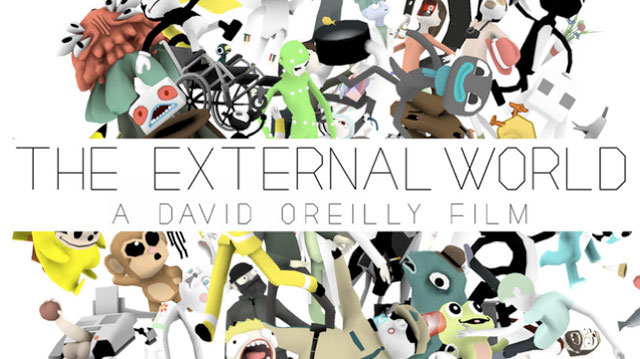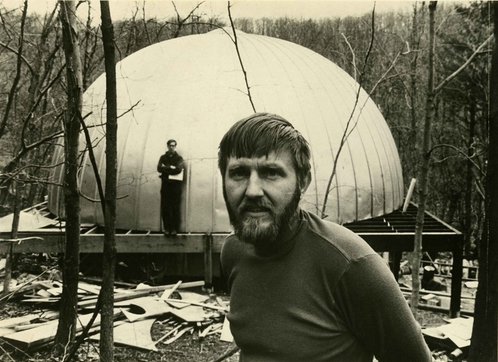I have now discovered that it will be more difficult to do an animation entry each week due to the way Netflix organizes its categories. Pixar, for example, is under “Children & Family” but is not cross listed in “Anime & Animation,” which is reserved more or less for just anime. In any event, we’ll have a short entry today with a feature film and a few shorts films.
We'll start off with some more obvious choices, and in the coming weeks I will dig a bit deeper to link to lesser known films.
I had the pleasure of seeing this with my nephews during its theatrical release, and I've always been disappointed that it hasn't received more attention over the years. It has been associated unfairly with the so-called demise of cel animation in favor of computer animation in feature filmmaking (which is a debatable premise in the first place). Director Brad Bird, of course, has gone on to great success with Pixar (The Incredibles and Ratatouille), but that just serves to show that Pixar's success is just as much about talent and storytelling as it is about technology. If you've been frustrated with the repetitiveness and limited story and character range of recent computer animated features (Despicable Me and Megamind come to mind), take a chance on Iron Giant and remind yourself that in the right hands cel animation is still capable of great storytelling power.
Perhaps what is most amusing about the Netflix user comments for Iron Giant is the anger that some parents express over the use of the word "hell" in the film ("Imagine my shock when I heard..."). As sensitive as I am to the needs of parents, if this weren't an animated film and were simply any PG-rated film, the outrage would seem more than a bit odd. Unfortunately the default assumption by most people is that anything that is produced using animation is obviously produced for children and therefore must be rated G.
The remaining picks this week are not what most would consider to be family friendly, but I hope to feature a range of animated styles and content in the coming weeks. I'll assume that not everyone automatically associates animation with children and family fare.
Perhaps what is most amusing about the Netflix user comments for Iron Giant is the anger that some parents express over the use of the word "hell" in the film ("Imagine my shock when I heard..."). As sensitive as I am to the needs of parents, if this weren't an animated film and were simply any PG-rated film, the outrage would seem more than a bit odd. Unfortunately the default assumption by most people is that anything that is produced using animation is obviously produced for children and therefore must be rated G.
The remaining picks this week are not what most would consider to be family friendly, but I hope to feature a range of animated styles and content in the coming weeks. I'll assume that not everyone automatically associates animation with children and family fare.
Death Note (Tetsuro Araki, Japan, 2007, 37 episodes x 23 minutes)
Edit 5/1/11: Also Streaming on Netflix.
Hulu: Light Yagami is an ace student with great prospects and he's bored out of his mind. But all that changes when he finds the Death Note, a notebook dropped by a rogue Shinigami death god. Any human whose name is written in the notebook dies, and now Light has vowed to use the power of the Death Note to rid the world of evil. But when criminals begin dropping dead, the authorities send the legendary detective L to track down the killer. With L hot on his heels, will Light lose sight of his noble goal...or his life? Netflix link. Hulu link. Edit 5/1/11: Also Streaming on Netflix.
This past summer I finally took the plunge and worked my way through this well respected anime series, which has inspired live action adaptations and other spin-offs. I was always intrigued by the series when I would catch it from time to time on Adult Swim, but it is immediately obvious when trying to catch it in the middle that you need to start the series from the beginning. While I would recommend pacing yourself with the series (otherwise it might get repetitive and frustrating if you watch it all at once), I have to admit that I did get very involved with the characters, and the twists and turns of the plot. If you allow yourself to buy into the premise of the story (which might take an effort for some viewers) there are several very suspenseful episodes, particularly in the middle (with the match of wits between Light and L) and near the end. While there are some anime series that I enjoy, the only other anime series that I've watched from beginning to end has been Neon Genesis Evangelion (and I've been trying to keep up with the rebuild films as they've become available). While Death Note is not as philosophically intriguing as Evangelion (although at times it tries to be), it is certainly one of the better series (of any kind) available in its entirety on Hulu.
A boy learns to play the piano. Vimeo link.
O'Reilly is an intriguing computer animator born in Ireland and currently working in Berlin, Germany. I first came across his work with Please Say Something, which found success on the festival circuit (including the Cucalorus Film Festival here in Wilmington, NC). The External World doesn't have the same range of emotional tones as Please Say Something, but it is a very funny series of sometimes violent and politically incorrect gags and comic scenes (note: this is "Not Safe for Work," as they say). It is hard to sustain a 17-minute running time with such a loose structure, but there is enough absurd comic energy to keep the audience engaged as long as they are not offended (which they shouldn't be). My favorite thread of action within these scenes involves a character who finds happiness after receiving a special prescription from his physician; the prescription doesn't really solve anything, but everything seems to be so much better. The bleak world view and skepticism about any easy answers that pervades the film is balanced by the way it reminds us of the absurdity of what we might call suffering.
EAI Online Catalogue: A pioneer in the development of experimental film and live-action animation techniques, Stan VanDerBeek achieved widespread recognition in the American avant-garde cinema. An advocate of the application of a utopian fusion of art and technology, he began making films in 1955. In the 1960s, he produced theatrical, multimedia pieces and computer animation, often working in collaboration with Bell Telephone Laboratories. In the 1970s, he constructed a "Movie Drome" in Stony Point, New York, which was an audiovisual laboratory for the projection of film, dance, magic theater, sound and other visual effects. His multimedia experiments included movie murals, projection systems, planetarium events and the exploration of early computer graphics and image-processing systems. UbuWeb Link.
I hope to highlight experimental filmmakers on Wednesdays as well as animators, and in coming weeks I hope to focus on more contemporary work. But for now I will just encourage you to explore the work of Stan VanDerBeek, whose range of work went beyond the collage animations I will focus on here. My personal favorites include Science Friction (1959), Achooo Mr. Kerrooschev (1960), and Breathdeath (1963).
I look forward to your thoughts on all of these films in the comments section. --JLK





I rewatched Yuriy Norshteyn's Tale of Tales on youtube last week, which is a film whose layers come through a lot stronger on multiple viewings, though I wish I could see it on a large screen again.
ReplyDelete